 Glycolic Peel
Glycolic PeelWhy Mandelic Acid Is The Gentle AHA Your Skincare Routine Needs
This almond-derived exfoliator is a game changer for sensitive and acne-prone skin types.
We’re all generally aware of the benefits of exfoliating the skin, but, depending on your skin type, the brightening and clarifying step may be a bit too aggressive. If you fall into that camp and are longing for smoother, clearer, and more radiant skin, we’ve got a solution. Enter mandelic acid. A member of the alpha hydroxy acid (AHA) family, the drupe-derived active is much gentler – though no less effective – than its fellow AHAs. In fact, it’s been shown to treat acne and boost collagen production better than some of its flashier counterparts. Intrigued? Here’s what you need to know about mandelic acid in skincare.
What Is Mandelic Acid?
First, let’s talk about acids – the skincare kind. The ever-popular hyaluronic acid (HA) is a humectant that helps draw moisture into the skin, while ferulic acid is a potent antioxidant. If pigmentation is your concern, look no further than tranexamic acid and kojic acid. And then there are exfoliating hydroxy acids, which include AHAs, beta hydroxy acids (i.e. salicylic acid), and poly hydroxy acids (PHAs).
Compared to fellow AHAs like glycolic, lactic, and malic acids, mandelic acid has been a bit of sleeper – but it’s worthy of centerstage. Mandelic acid is derived from bitter almonds and “works as an exfoliator and increases cell turnover,” says Shuting Hu, PhD, a cosmetic scientist and founder of Acaderma. As she explains, AHAs are great for those with dull skin because they “help rid your skin of loose skin cells, leaving your skin to look brighter and smoother.”
Mandelic acid has a larger molecular size than glycolic and lactic acids and is also more oil soluble. As a result, it penetrates the skin slower but deeper than some of its cousins. “Mandelic acid is great for those with acne-prone and/or sensitive skin, as it is gentler than most chemical exfoliants,” Dr. Hu says. It treats the surface of the skin, but it’s ability to get deeper into the skin (à la fat-soluble BHAs) also allows it to help regulate sebum production, unclog pores, and reduce inflammation – all of which can help reduce the chance of breakouts.
The Benefits of Mandelic Acid for Skin
Mandelic acid works to combat acne and signs of aging (think: dark spots, fine lines, and wrinkles) by promoting cell turnover. “As an exfoliator, it helps improve skin’s texture and appearance and even helps reduce hyperpigmentation,” Dr. Hu says. If you have skin concerns related to uneven skin tone and uneven skin texture but have found AHAs to be too aggressive in the past, mandelic acid may be the solution. It removes dead skin cells, lightens pigmentation, and promotes collagen production – though it does so in a much gentler way.
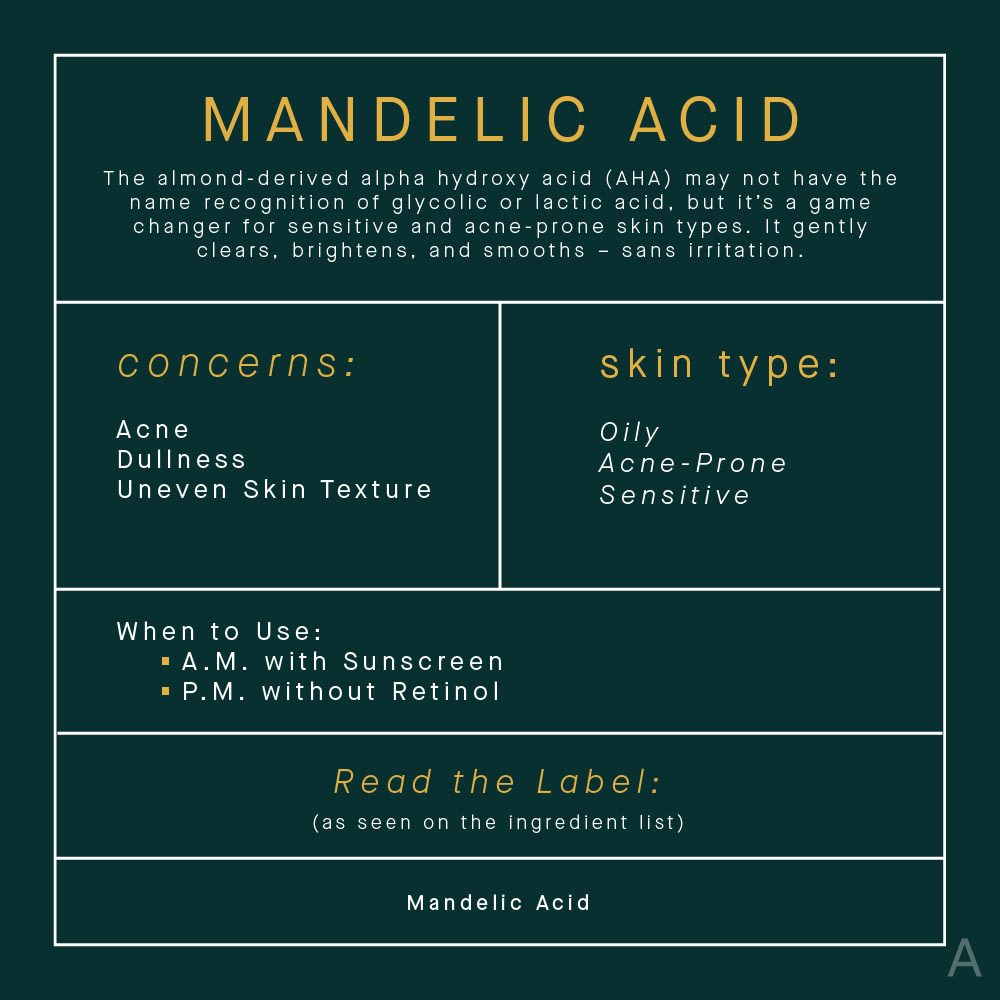
In the case of acne, a 2019 study found that a chemical peel with 45 percent mandelic acid was as effective as a chemical peel with 30 percent salicylic acid for those with mild to moderate acne. The AHA even had a slight edge over the heralded BHA when treating inflammatory acne. An added benefit? It's less irritating than salicylic acid.
Needless to say, those with acneic skin or anyone who wishes to brighten or smooth the complexion will benefit from using mandelic acid. In fact, Dr. Hu recommends it to just about anyone. “It is still a great exfoliant choice for those who don’t have those skin concerns, as it is always beneficial to use an exfoliant to help your skin look smooth and bright,” she notes.
How to Add Mandelic Acid to Your Skincare Routine
Because of the exfoliating nature of mandelic acid, it is most commonly found in leave-on and wash-off treatments. You’ll likely find the active in cleansers, toners, serums, and peels. While you can use it as part of your morning or evening regimen, be extra mindful of your sun protection. Like all AHAs, mandelic acid can increase photosensitivity.
While mandelic acid is much less likely to sensitize the skin than other AHAs, it’s best to start slow. “It is important to start off using it once a week to see how your skin reacts and then up your usage from there in order to avoid any irritation,” Dr. Hu shares. You can also try short contact therapy to build up your tolerance. Additionally, be mindful of what else you are using in your routine. “One important thing to note is that mandelic acid should not be used with any other retinol, retinoids, or peels because doing so may lead to skin irritation,” she cautions.
If you’re ready to welcome mandelic acid into your skincare routine, below are a few ways to do so:
FOR MATURE SKIN: The Inkey List Mandelic Acid Treatment
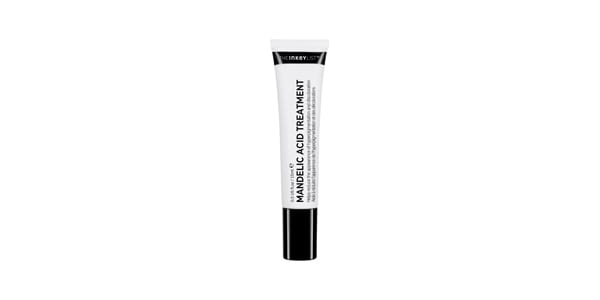
This P.M. product is designed with all skin types (even sensitive) in mind, but we love it for mature skin because it combines the dark spot-correcting benefits of 10 percent mandelic acid with the cellular turnover powers of 0.1 percent encapsulated retinol and the humectant properties of 2 percent glycerin to target stubborn pigmentation and even out the complexion without drying out or irritating the skin. $10, sephora.com
FOR SMALLER PORES: PCA Skin Pore-Refining Treatment
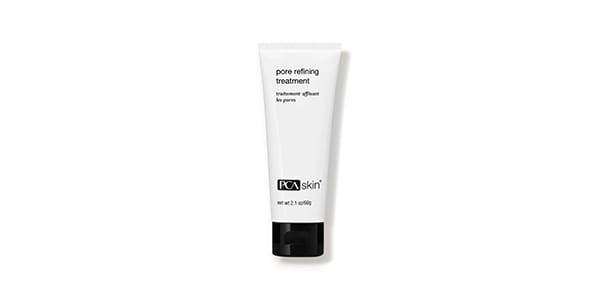
For deep exfoliation, add this pore-refining treatment to your skincare lineup. The dual chemical and physical exfoliant minimizes the appearance of large pores. Mandelic acid gently sloughs away the build up of dead skin cells and debris that clog pores (and cause breakouts), while kaolin and bentonite clay absorb excess oil for less shine. $64, dermstore.com
FOR MULTITASKING MAINTENANCE: Holifrog Shasta AHA Acid Wash
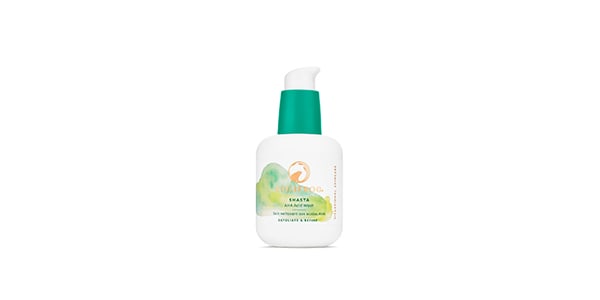
Whether you are dealing with breakouts, dullness, or texture concerns, this exfoliating cleanser is for you. A blend of AHAs brightens and smooths the skin while minimizing pores, and mandelic acid, in particular, was chosen for its large molecular size that minimizes the risk of irritation. Use daily to gradually improve skin tone and texture or to maintain your complexion. $38, holifrog.com
FOR A GLOW UP: Dr. Dennis Gross Skincare Mini Alpha Beta Extra Strength Daily Peel

“This is a two-step AHA and BHA peel pad that combats hyperpigmentation, fine lines, wrinkles, and pores,” Dr. Hu explains. “It contains seven different acids, including mandelic acid, and leaves skin looking firm, youthful, and radiant.” $17 for 5 treatments, sephora.com
FOR POST-ACNE MARKS: Naturium Mandelic Topical Acid

If you have scars or post-inflammatory hyperpigmentation (PIH) left behind from acne, this treatment is the answer. Mandelic acid is paired with niacinamide to pull double duty by both curbing active breakouts and brightening any lingering spots. We call that a win-win. $20, naturium.com
FOR A CLEARER COMPLEXION: Youth to the People Mandelic Acid + Superfood Unity Exfoliant
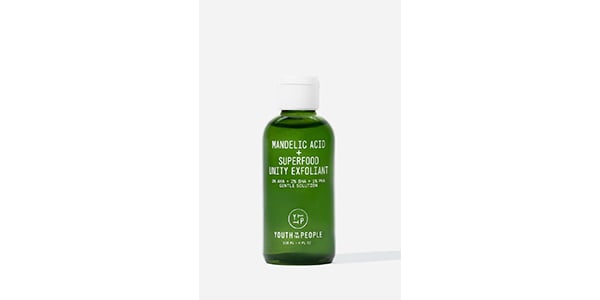
If you like the idea of a product that works for your skin all day, then give this toner a try. It’s packed with mandelic acid, kale, licorice root, and green tea to keep skin clear, even, and protected. Simply swipe a soaked cotton pad over your skin and then layer it with your favorite moisturizer and SPF. $38, youthtothepeople.com
FOR SMOOTHER SKIN: Naturopathica Sweet Cherry Brightening Enzyme Peel

Formulated with oily and acne-prone skin in mind, this fruity at-home peel is powered by sweet cherry puree and an AHA blend (including, you guessed it, mandelic acid). Together, they soften and smooth the skin to reduce the appearance of visible signs of aging. Use two to three times a week for three to five minutes at a time for best results. $62, dermstore.com
FOR FADING DARK SPOTS: Allies of Skin Mandelic Pigmentation Corrector Night Serum
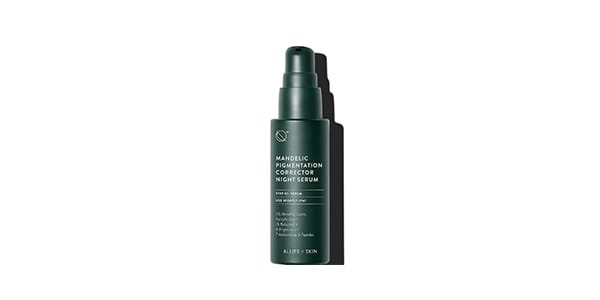
This mandelic acid serum is a true multitasker — it treats blackheads, uneven texture, and pigmentation. The AHA fades away dark spots and melasma without irritating the skin, and it also has antioxidants that protect against free radicals and environmental damage like UV damage, pollution, and blue light. $95, revolve.com
FOR A DEEP CLEAN: Neostrata Mandelic Clarifying Cleanser
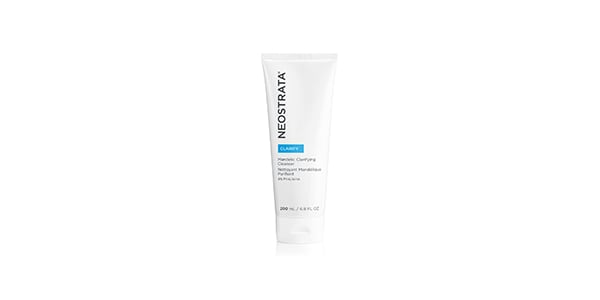
This soap-free formula pairs 4 percent mandelic acid with PHAs and BHAs to gently-yet-thoroughly cleanse the skin. It washes away excess oil and acne-causing bacteria to minimize the appearance of pores and lessen the likelihood of breakouts, in addition to sloughing away dead skin cells to improve tone and texture. $32, neostrata.com
FOR DRY SKIN: The Ordinary Mandelic Acid 10% + HA
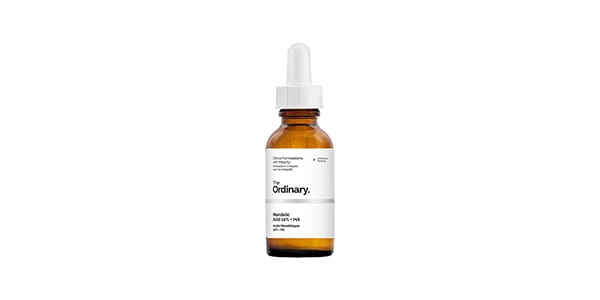
The price tag isn’t the only thing to love about this smoothing and hydrating serum. Mandelic acid and hyaluronic acid (HA) work to target uneven tone, textural irregularities, and fine lines. It’s considered well-suited for sensitive skin thanks to the gentle nature of the AHA and the hydrating benefits of HA. $8, ulta.com
All products featured are independently selected by our editors, however, AEDIT may receive a commission on items purchased through our links.
More Related Articles
Related Procedures

AI Plastic Surgeon™
powered by'Try on' aesthetic procedures and instantly visualize possible results with The AI Plastic Surgeon, our patented 3D aesthetic simulator.


